On my flight home over Thanksgiving break I snapped this picture of a river from above. I’m not sure exactly where we were in the flight, so I have no idea where this river is, but I thought it was a pretty cool sight. We don’t usually get the opportunity to see rivers from this angle. What especially stood out to me was seeing the many different branches and paths of the river, and how that created some islands in the river. 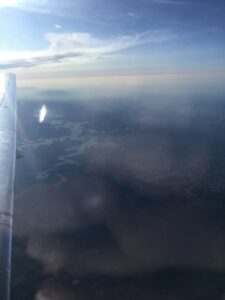
Author: Becca Wilts (Page 1 of 2)
This past weekend, I took a trip to Louisville, and shortly after my connecting flight in Detroit took off I snapped this picture, which reminded me of the way rivers spread out across a landscape. In the center, you can see the city of Detroit, but then you see all the roads and highways branching off of the city, similar to how a river or lake can have several small tributaries branching off of it.
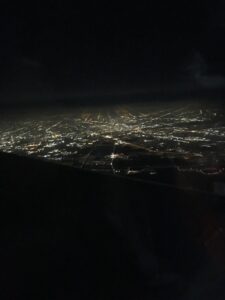
This morning while registering for courses I was struck with how everyone registering for courses was similar to a dam stopping up a river. Many students experienced the site crashing and had delays while trying to log in. Like a river flowing through a dam, there were too many people trying to use the site at the same time, so the site kept crashing and only allowed some people in at a time, similar to how a dam only allows a small amount of water through at each moment, even though there is much more water trying to go through. Also similar to how a river flowing through a dam can produce energy, the frequent site crashes also caused a lot of frustrated energy from students!
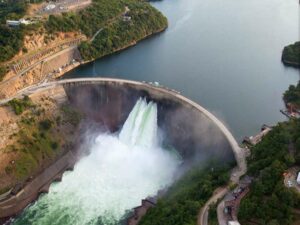
This past week during crew practice on the Lehigh River, I spotted a great blue heron sitting under an overhanging tree on the shoreline. Although it flew away before I was able to snap a picture, I thought it was cool to see such a huge bird up close. Blue Herons typically grow to a height of 3.5-4 feet tall, and the main diet of the Blue Heron is small fish, and they hunt by waiting on shorelines or in shady areas then spearing passing fish with the help of their long neck. I had never been able to see a heron this close before, and I was really taken aback by the size of such a large and magnificent bird.

Over fall break I was hiking in Bucks County and stumbled upon this little creek. It was very quiet and tranquil, not quite moving with the same quick speed that the Bushkill does. It was a very pretty place to stop and pause and watch the natural life occurring around the creek.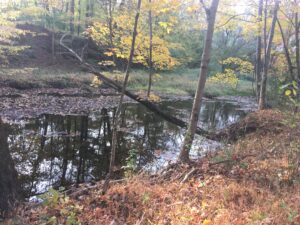
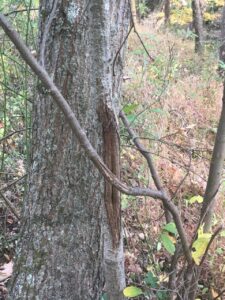
Over fall break I went hiking near Bethlehem and noticed this spot on a tree where a buck had rubbed his antlers against the tree and rubbed the bark off, and it also helps signify areas where deer are present. This spot was located near a small creek, which is probably why it is a frequently trafficked area for the deer.
When I went downtown to watch a performance of Vanity Fair last weekend, I thought the river seemed lower than usual when I passed by the curtain. The water was at least a foot below the bottom buoy, and many of the larger rocks on the bottom of the riverbed were exposed and visible. According to the National Weather Service, this region has received slightly more than average rainfall for the year-to-date, but over the last 2 months, it has received less rainfall than usual, anywhere from .5 to 1 inch less than usual. This may have contributed to the river seeming lower than it usually is. 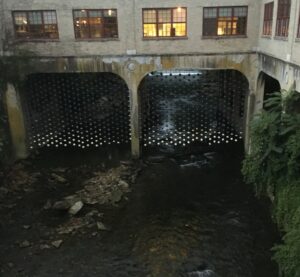
I spotted this cool creature in my common room a few nights ago, and although I wasn’t sure exactly what it was, after a bit of research I concluded it was probably a Katydid. It’s hard to see the bug clearly in the picture I took , but I included a more clear picture of what these bugs look like. Katydids are mostly nocturnal, and in the daytime, they have a unique defense mechanism to protect them while they rest. In the 2nd picture you may have noticed that the bug kind of looks like a leaf. When Katydids rest in trees they unfold their wings to lay flat, and in doing so they look almost identical to a leaf, so they are left alone by most predators. 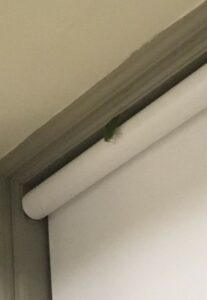
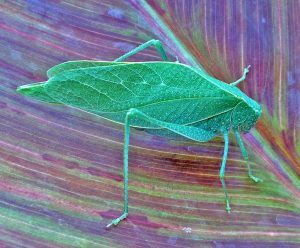
This past weekend I walked down and explored Easton with my aunt. We walked to the point where the Lehigh and the Deleware Rivers meet. I had observed the dam from afar, but never looked at it up close. The word that came to mind to describe it was “powerful.” I think looking at a dam and the rush of moving water helped me realize the power and constant flow the river has. I also thought it was interesting to see how covered the dam was with algae. I bet the dam looks different now than it did when it was built, and will look different in 10 year again because of the way natural life (such as the algae) grows around it.
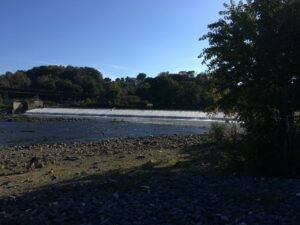
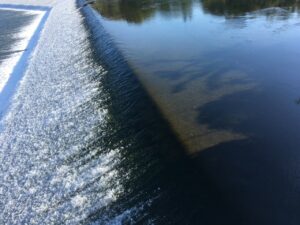
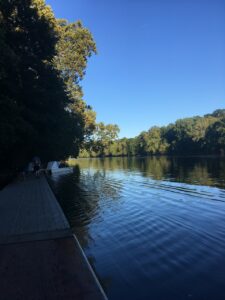
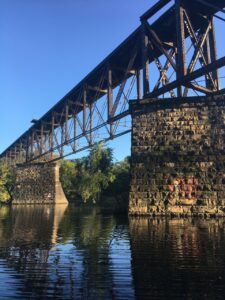
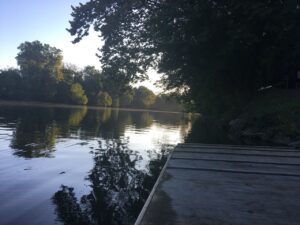
These are 3 pictures taken from the crew team’s boat house on the Lehigh River. The picture in the center shows the railroad tracks which pass over the river (the train horn can be heard from campus). The picture on the bottom shows the view looking downstream; if you were to follow that, it would lead you to the dam in downtown Easton, which we paddled past at the beginning of our kayak trip. In this part of the river, the current is not very strong and the river is mostly flat, so we are able to row both upstream and downstream with little difficulty. One thing that I also found interesting was the spraypaint on the rock support towers for the train tracks. Each year the seniors on the crew team paint the year and their names (or initials) on the stone.